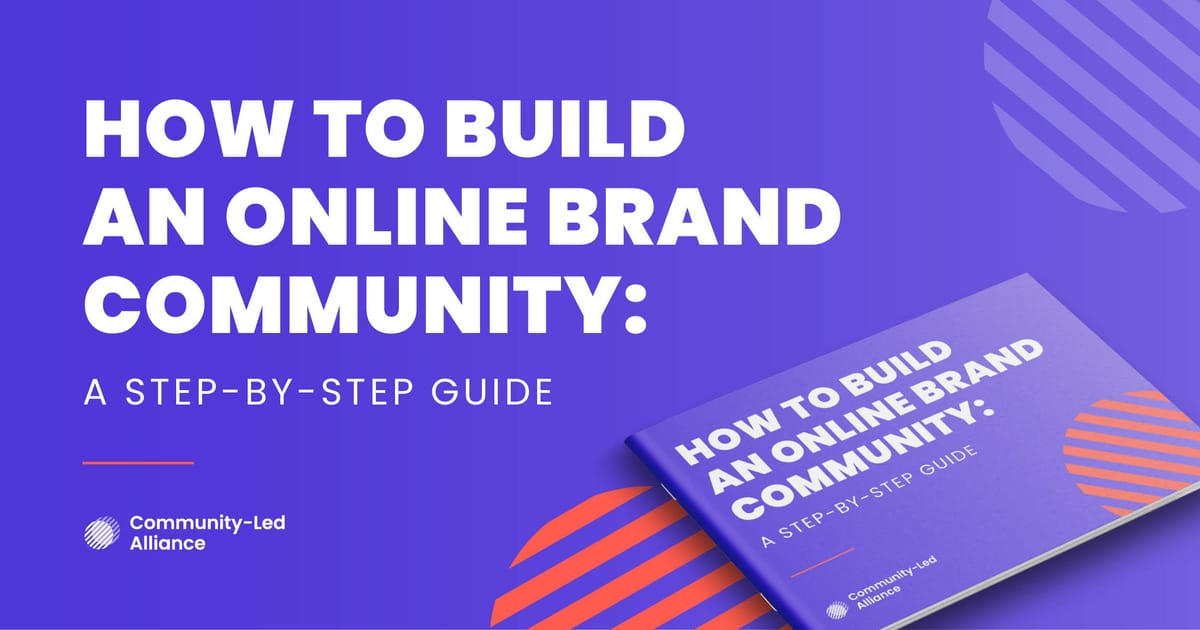A micro-community is a small group of people who share a common interest, goal, or experience. Unlike larger communities, micro-communities focus on creating deep, personal connections among members, fostering a sense of belonging and mutual support.
These intimate groups offer numerous benefits, including stronger personal connections, targeted support, and enhanced engagement. When you create a micro-community, you can bring together a dedicated group of people united under a common purpose.
In this article, we’ll take a closer look at the benefits of micro-communities, and how you can build and sustain your own.
What is a micro-community?
A micro-community is a small, close-knit group of people brought together by a shared interest or goal. Unlike large communities, micro-communities are more intimate, able to form a deeper and more personal connection.
Some examples of micro-communities include:
- Online forums: Small groups within larger forums focused on specific topics, such as a subgroup of writers within a general writing community.
- Neighborhood groups: Local groups formed around geographical proximity, often engaging in activities neighborhood watch or local improvement projects.
- Niche interest groups: Specialized groups such as hobby clubs (e.g., knitting circles, book clubs), professional networks (e.g., marketers), or support groups (e.g., those for mental health or chronic illness).
Difference between micro and macro communities:
Scale and scope
Micro communities are small in size, ranging from a handful to a few dozen members. The focus is narrow, honing in on specific interests or needs. Meanwhile macro communities are large and broad, encompassing a wide range of interests and will have hundreds or even thousands of members.
Interaction dynamics
Interactions in micro communities are frequent and personal, with high levels of engagement and participation from members. Discussions are also more meaningful and in-depth. Whereas macro communities tend to have more superficial interactions due to the large number of members. Engagement can be sporadic, and personal connections are harder to form.
Personal vs. generalized connections
In micro communities, connections are personal and direct. Members often know each other well and provide personalized support and advice tailored to their needs. In macro communities, connections are more generalized and less personal. The support provided is more broad and less specific.

Benefits of micro-communities
Personal connections
In micro-communities, members can form genuine, close-knit relationships. The smaller size of the group allows for more frequent and personal interactions, fostering trust and camaraderie. These deep connections often lead to long-lasting friendships and a strong sense of belonging within the community.
Micro-communities also offer robust support networks. Members are more attuned to each other's needs and challenges, providing emotional and practical support. Whether it's celebrating successes or navigating tough times, having a dedicated group of people to rely on can make a significant difference to a person’s life.
Focused interests
Micro-communities are built around shared interests or common goals, which means that every member is genuinely invested in the topic or brand. This shared passion creates a strong bond among members and drives active participation, making the community more dynamic and engaging.
Because micro-communities focus on specific interests, the content and discussions are highly relevant and tailored to the members' needs. This targeted approach means that the information shared is practical and valuable, enhancing the overall experience for each member.
Enhanced engagement
With fewer members, each person's voice is more likely to be heard and valued. This encourages higher participation rates, as members feel a greater sense of ownership and importance within the group. Active involvement leads to richer discussions and a more vibrant community life.
Micro-communities thrive on this active engagement. Members are more likely to participate in discussions, share ideas, and collaborate on projects. The smaller group size fosters an environment where everyone feels comfortable contributing, leading to innovative solutions and collective growth.

Types of micro-communities
Professional development
In a professional context. Micro-communities offer invaluable networking opportunities. These smaller groups provide more meaningful connections compared to larger events. Members can interact with peers, mentors, and potential collaborators, creating a professional network that can open doors to new opportunities and career advancements.
In these types of micro communities, members share their expertise and knowledge, fostering a culture of continuous learning. Whether it's through formal workshops, discussions, or collaborative projects, these industry-based communities provide a platform for skill enhancement and professional growth. This environment encourages members to stay updated with industry trends and best practices.
Personal interests and hobbies
Micro-communities centered around personal interests and hobbies are perfect for finding like-minded individuals. Whether it’s gardening, painting, or gaming, joining a small group of enthusiasts ensures that you’re surrounded by people who share your enthusiasm and can contribute to your growth in that area.
These communities are hotbeds for creativity and innovation. Members regularly share their projects, ideas, and experiences, providing inspiration and fresh perspectives. This exchange not only fuels individual creativity but also helps in discovering new techniques, tools, and approaches related to the shared hobby or interest.
Health and wellness
Micro-communities play a crucial role in health and wellness by offering support groups. These groups provide a safe and supportive environment for individuals dealing with similar health issues. Members can share their experiences, offer advice, and provide emotional support to one another.
For all these types of micro-communities, they provide a tailored and supportive environment that can significantly enhance personal and professional well-being. Whether through networking, skill sharing, creative collaboration, or support, the focused nature of micro-communities makes them uniquely effective in fostering growth and connection.
Building and sustaining a micro-community
Starting a micro-community
The first step to building a micro-community is to identify a niche or a specific area of interest that is not adequately served by existing groups. This could be a unique hobby, a professional industry, or any specific interest that a small group of people might share. The more focused and specific the niche, the easier it will be to attract and retain members who are genuinely interested.
Once the niche is identified, the next step is to find initial members. Start by reaching out to your network, including friends, colleagues, and acquaintances who share the same interest. Use social media, local bulletin boards, or community centers to spread the word. Hosting a small introductory event or meeting can also help in attracting interested individuals.
To facilitate communication and interaction among members, choose appropriate platforms. Social media groups (like Facebook Groups), online forums (like Reddit), or dedicated platforms (like Slack or Discord) can be effective.
The choice of platform should depend on the preferences of the target members and the nature of the community's activities. Ensure that the platform is user-friendly and accessible to all potential members.

Sustaining engagement
To keep members engaged, organize regular activities and events. These could include weekly or monthly meetings, webinars, workshops, or social gatherings. Regular events provide structure and give members something to look forward to, fostering ongoing participation and interaction.
Encourage all members to actively contribute to the community. This could be through sharing their own experiences, leading discussions, or organizing events. Recognize and appreciate contributions to motivate members. Creating opportunities for everyone to participate helps in building a sense of ownership and belonging.
Continuously provide value to the members by sharing relevant resources, information, and opportunities. This could include articles, tutorials, industry news, or exclusive access to events. The more value the community offers, the more likely members will stay engaged and invite others to join.
Challenges and solutions
Common challenges that can occur when building a micro-community:
- Maintaining interest: Keeping members interested over the long term can be challenging, especially as the initial excitement wears off.
- Managing conflicts: Disagreements and conflicts can arise, potentially disrupting the harmony of the community.
- Balancing effort: The community leader may find it challenging to balance their time and effort with other commitments.
Strategies to overcome these challenges:
- Diversifying activities: Keep the community dynamic by introducing new activities and topics regularly. Poll members to understand their interests and tailor activities accordingly.
- Conflict resolution: Establish clear guidelines for communication and behavior within the community. Address conflicts promptly and fairly, and consider having a neutral mediator if necessary.
- Delegating responsibilities: Share the workload by delegating responsibilities to other active members. Forming subcommittees or assigning roles can help distribute tasks and prevent burnout.
Final thoughts
Micro-communities are a unique and powerful way to connect with others on a deeper level, providing a number of benefits that larger communities often can’t match. They allow for personal connections, support systems, and targeted interactions. They offer a refuge from the noise, a place where genuine connections and meaningful interactions can flourish.
Join our Slack community to connect with other community managers and get answers to your most pressing questions!





